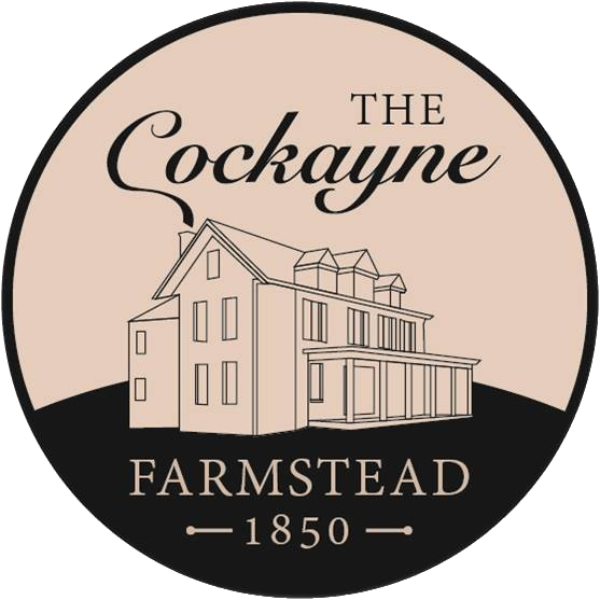Cockayne Farmstead 2001
History of the Preservation Project
With Sam Cockayne's passing in 2001, the house and its collection of 19th Century family artifacts were left to the City of Glen Dale. The city decided to lease the property to the Marshall County Historical Society in return for the Society’s preservation work.
In March 2003, the City of Glen Dale and the Marshall County Historical Society signed a lease agreeing that the Society would try to preserve and protect the farmhouse and its collection for community use. The Society began by trying to secure funds to meet its goals.
In 2005, the Society finished their Master Plan. The box gutter system was rebuilt, the slate roof replaced, and all of the family artifacts were catalogued by volunteers. The Cockayne prehistoric Indian burial mound was recovered and restored to the farmhouse and modern underground electric service was provided to the Cockayne cellar. Lisa Cockayne, who resided in the original tenant house next door, died and benefactors were located to purchase the property to protect it from demolition.
From 2007-2009, the front wraparound porch was rebuilt and the exterior of the farmhouse restored/rehabilitated, returning it its color during the “era of significance.” The south lawn was recovered and reunited to the property and the tenant house began to be used for offices and programming. A part-time program director was hired to interface with the schools and institutions of higher learning and a volunteer began scanning over 15,000 pages of ephemera to allow research of the family’s history.
In 2010, an outbuilding/shed was restored by Belmont Technical College’s Building Preservation and Restoration Program. With the exterior envelope of the farmhouse protected, investigations began on an approach to returning climate control to the farmhouse. John Marshall High School students began utilizing the south lawn for community gardens funded by USDA “Living to Serve” grants.
From 2011-2012, Glen Dale created the Cockayne Farmstead and groundwork was laid to create an educational curriculum around the history and sustainability of Cockayne. A Cultural Landscape Study was completed by a student of WVU’s Landscape Architecture Department and the Cockayne Farmstead becomes a part of the Marshall County Tourism Committee to promote Marshall County as a tourism destination.
From 2012-2013, all the items and paperwork in the house were removed to prepare for installation of a humidistatically controlled geothermal climate control system. Now that the house was empty, much needed plaster repair and cleaning could take place. The geothermal unit was installed supplying the farmhouse with central heating/cooling for the first time and the cleaned artifacts could be returned. The mortgage for the tenant house was paid off and was officially reunited to the Cockayne Farmstead. Design for electric distribution was completed and sent to the WV Division of Culture & History for approval as well as the completion of a curb cut for frontal access to the property. Progress was made on the development of a web-based curriculum through the association of Sustainable Learning Systems and the Professional Education Department at Wheeling Jesuit University.
In 2014, designs for electric distribution (including lights, wall outlets and safety lights), unobtrusive interior storm windows, and a handicapped accessible ramp and walkways were provided to the State Historic Preservation Office for approval. The Adopt an Artifact Campaign was launched to conserve the large collection of family artifacts. 13 pieces of original Cockayne artwork were restored and more items were adopted for future conservation.
In 2015, interior storm windows were installed and a complete electrical upgrade of the 1895 electrical system, including distribution of outlets, was achieved. Three original 19th Century family lighting fixtures were restored and two were connected to the modern electric. Several layers of the original 19th century wallpaper were documented and conserved for future research or replacement. A handicap accessible ramp and pebble walkways between the parking lot and the farmhouse were completed in the Fall of 2015. An Executive Director was hired in September, 2015, and the Farmstead welcomed the newly formed Marshall County Convention and Visitor’s Bureau to share space within the Visitor Center. This increased visibility and provided a stream of income for the Farmstead.
In 2016, a new executive director was hired historic marker and a new Visitor Center sign and historic marker were added in August. The previous parking lot, made up of grindings, was replaced with asphalt and a handicap accessible walkway to the Visitor Center was completed. Funds were secured to upgrade the electric in the Visitor Center and to install a handicapped accessible restroom.
In 2017, a new Site Manager was hired and the organization focused on offering more programing at the site. The electric in the Visitor Center was upgraded as was the hot water tank. Unfortunately, the CVB moved out of the Visitor Center, but this allowed for expansion of the gift shop and more programming space. Also, the exhibits in the farmhouse were redone with the help of a West Virginia Humanities Council grant.
Restoration of the North Parlor
Cockayne Farmstead is partnering with Elegance, LLC in restoring the north parlor using traditional plaster methods. Restoring traditional plaster in a historic structure presents a unique challenge. The primary goal is to retain as much original material as possible while ensuring a maintenance-free lifespan through normal use of the structure for many years. The ultimate objective is to fully restore the room to its original 1850s appearance, which includes historical wallpaper that reflects the authentic period style.










